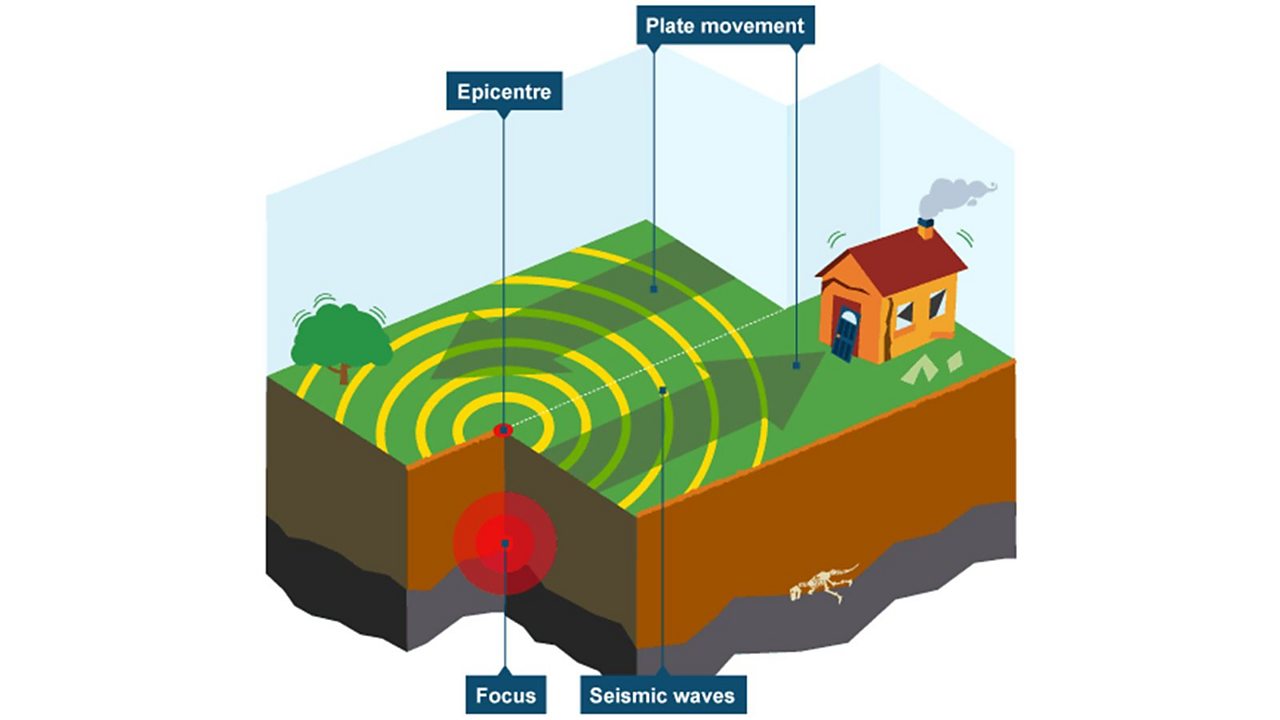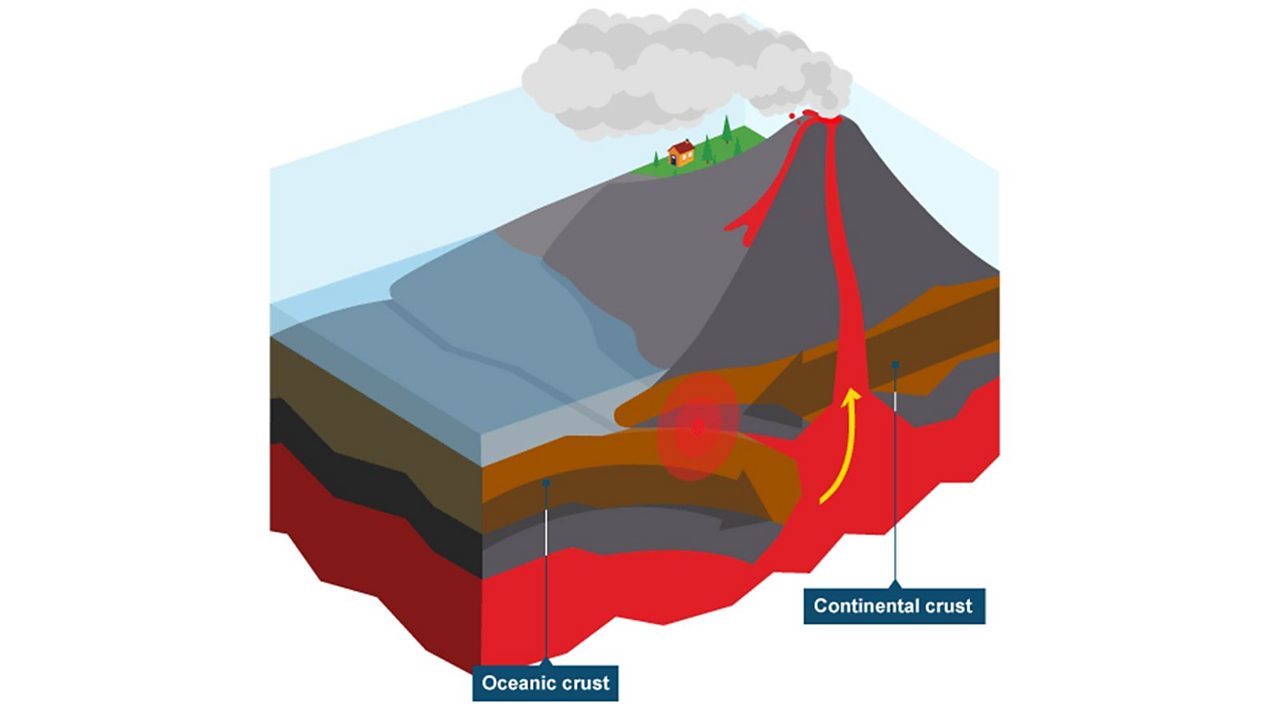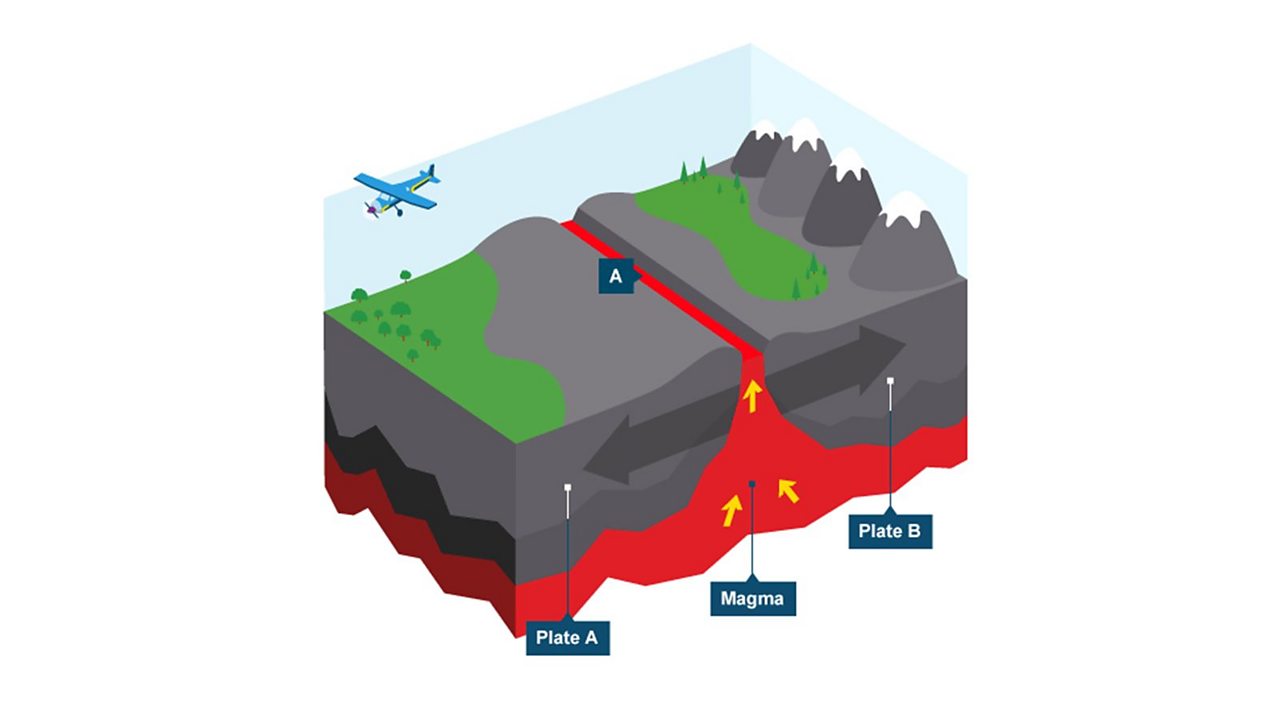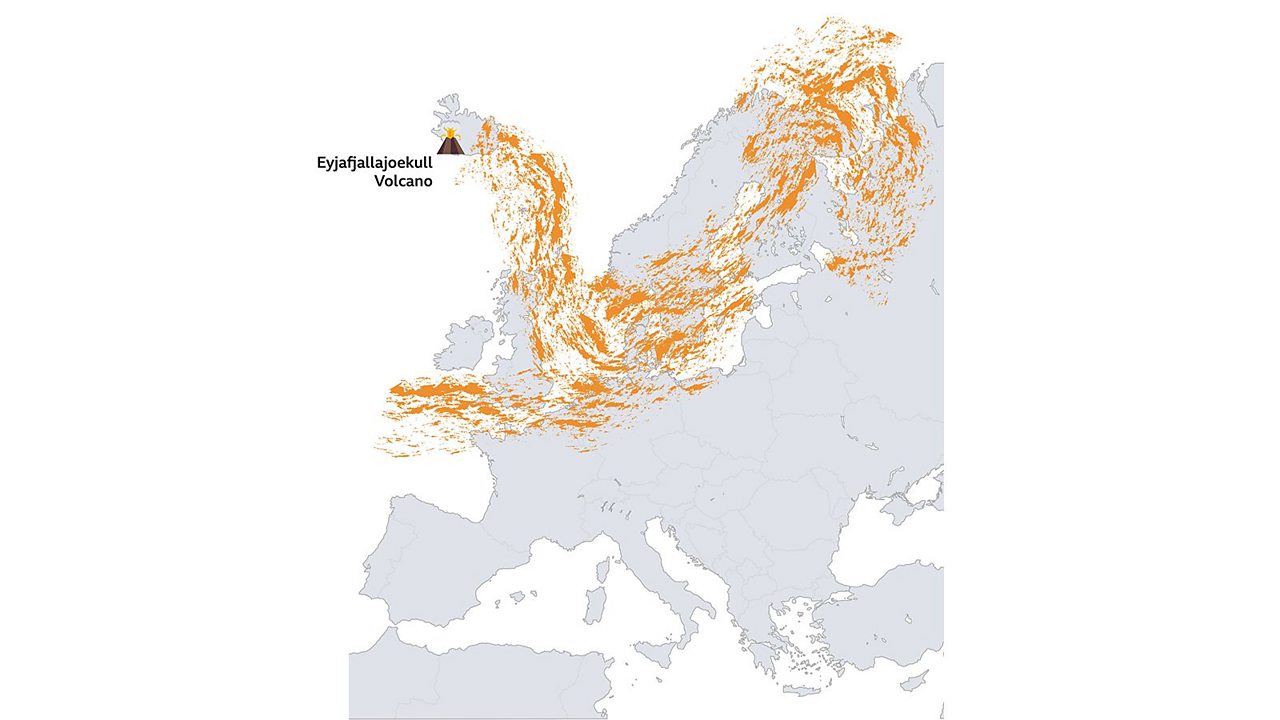What Happens to a Volcano if Its Never Going to Explode Again
What happens when a volcano erupts?
On iii July, a volcano erupted on the Italian island of Stromboli, killing one person and leading to the surface area being evacuated.
It is one of the nigh active volcanoes in Europe and its last major eruption was 17 years agone.
We look at why volcanoes exist in the beginning place, and why some erupt when others don't.
The respond lies far below the Earth'south surface.
What forms a volcano?
Volcanoes are formed when magma (liquid rock) trapped underneath the Earth'due south crust rises to the surface and escapes through cracks.
The space for the magma to leave is very small and, as it travels, pressure builds, meaning information technology escapes violently when released.
This escaping liquid rock becomes lava, which solidifies as it travels. Layers of lava build up over fourth dimension, creating volcanoes.
What triggers an eruption?
Tectonic plates are cardinal. They are large pieces of the Earth'southward crust which can move towards, abroad from, or alongside one another, and in doing so tin can trigger a volcanic eruption.
Moving tectonic plates tin cause earthquakes, which then create fissures (these are weaknesses or small tears in the Earth'southward crust). When fissures announced, the magma beneath the surface has an opportunity to escape.
What happens during an eruption?
Eruptions vary depending on the type of volcano and the dissimilar types of tectonic boundary they sit down on.
At destructive boundaries - where tectonic plates are moving towards each other - you'll find composite volcanoes.
Composite volcanoes have very gummy and thick lava, which tin can make them very explosive when they erupt: gas bubbles that are trapped in the magma chamber find information technology hard to escape through the viscous rock.
They tin also spurt lots of hot ash and rocks into the air, making them extremely dangerous.
Shield volcanoes on the other hand form at constructive tectonic boundaries (where the tectonic plates move abroad from each other) and accept very thin, runny lava.
This means that when a shield volcano erupts, the lava is extremely fast and can cover big areas very quickly. Some of the most famous examples of shield volcanoes make up the islands of Hawaii. 1 of them, Mauna Loa, is actually the largest volcano on the planet.
After a volcano erupts, what effect does it take on the local expanse?
Volcanic eruptions can exist catastrophic in some cases. The immediate area is commonly evacuated quickly to keep people safe.
Extremely hot lava can besides crusade lots of damage, burning through towns and farmland. The ash from a volcano can also cause animate problems, and create travel disruptions, equally it lowers the visibility for pilots.
This is what happened when Eyjafjallajokull erupted in Iceland in 2010. The ash cloud spread all over Europe, which meant that over 100,000 flights had to be cancelled. 10 million people missed flights and airlines lost over £1.3 billion.
Information technology might sound counter intuitive, but a volcanic eruption can sometimes benefit its surroundings.
For case, the ash and lava (if not also thick) can break downward to create extremely fertile farmland, which makes the surrounding areas expert places for people to grow crops.
The scenery tin can too be very beautiful and tin attract tourism to the expanse; Hawaii is a case in betoken. The heat generated from eruptions can be used to produce electricity, as estrus creates steam when in contact with h2o, and this in turn can be used to bulldoze turbines.
Source: https://www.bbc.co.uk/bitesize/articles/zrj6gwx




0 Response to "What Happens to a Volcano if Its Never Going to Explode Again"
Post a Comment